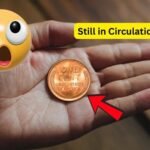Have you ever stopped to think that the loose change jingling in your pocket might be worth a fortune? Most of us barely glance at our quarters before spending them at vending machines or tossing them into a tip jar. But what if one of those ordinary-looking coins wasn’t so ordinary after all? What if a single quarter could be worth millions—possibly even $94 million? It sounds like a dream, but in the world of coin collecting, dreams like this have actually come true.
Among the most intriguing stories in numismatics is the legend of the Rare Bicentennial Quarters—coins that, while seemingly common, can be worth astonishing amounts under the right conditions. These are not just collector’s items; they’re literal treasures hiding in plain sight. The Rare Bicentennial Quarters, especially those with unique errors or exceptional quality, have become the holy grail for many collectors and historians.
Let’s explore which of these rare coins could be hiding in your home, how much they’re worth, and why they’ve become so incredibly valuable.
What Are Rare Bicentennial Quarters?
In 1976, to mark the 200th anniversary of the signing of the Declaration of Independence, the U.S. Mint released special edition coins with new reverse designs. These included the quarter, half dollar, and dollar coin. For the quarter, the standard eagle design was replaced with an image of a Colonial-era drummer boy, surrounded by a torch encircled with 13 stars—symbolizing the original 13 colonies.
These Bicentennial quarters were issued with the dual date “1776–1976” and were struck in both Philadelphia and Denver for circulation, as well as San Francisco for collectors’ proof sets. Most of them are still worth face value. However, a small number of Rare Bicentennial Quarters—due to minting errors, special compositions, or pristine condition—are worth much, much more.
Some of these rare coins have fetched tens of thousands, and others have reportedly been valued as high as $94 million, depending on their rarity and the fervor of collectors.
Roosevelt and Mercury Dimes That Are Also Worth a Fortune
While Rare Bicentennial Quarters are the headliners in many coin collections, they’re not the only U.S. coins that could bring you a fortune. Several dimes also fall into the category of rare and highly valuable coins. Here’s a breakdown of a few that are worth keeping an eye out for.
1946-S Roosevelt Dime
First up is the 1946-S Roosevelt Dime, the very first dime issued after President Franklin D. Roosevelt’s death. This coin was minted in San Francisco and carries the “S” mintmark. Due to its historical significance and relatively low mintage, collectors consider it a must-have.
Finding one in uncirculated or proof condition is tough, but if you do happen to come across one, it could be worth $1,000 or more, with some extremely pristine specimens fetching upwards of six figures.
1968-S Roosevelt Dime
Another gem from the San Francisco Mint is the 1968-S Roosevelt Dime. This coin is particularly desirable when found in flawless proof condition. While more common than the 1946-S, finding one without any scratches, discoloration, or blemishes is still a challenge.
Collectors are willing to pay thousands of dollars for the highest-graded examples. If you have old proof sets stored away, it’s worth checking for this undervalued treasure.
1975 Roosevelt Dime (No Mintmark)
This might be one of the most deceptive coins out there. The 1975 Roosevelt Dime looks almost identical to every other dime from that era—except for one crucial difference: the missing mintmark.
Most 1975 dimes were marked with either a “D” for Denver or “S” for San Francisco. However, a few were mistakenly struck without a mintmark. These error coins are extremely rare and can be worth anywhere from $500 to $50,000, depending on their condition.
1916-D Mercury Dime
This coin is often cited as one of the most iconic and rare dimes in U.S. history. The 1916-D Mercury Dime features the winged Liberty head—often mistaken for the Roman god Mercury—and was minted in very limited quantities: only 264,000 coins were produced.
In average circulated condition, this coin might fetch $10,000 to $20,000. But in uncirculated condition, it’s a six-figure star. In top-tier condition, it could exceed $1 million at auction.
Spotlight on the 1976 Rare Bicentennial Quarters
Now let’s get to the real star of the show—the Rare Bicentennial Quarters. While the vast majority of these special quarters are worth only 25 cents, a tiny number have unique traits that make them incredibly valuable.
Some were struck on silver planchets intended for collector sets, while others have rare minting errors like double strikes, misaligned dies, or no mintmark at all. Additionally, a few exist in perfect Mint State 70 (MS70) condition—graded by services like PCGS or NGC—which is exceptionally hard to achieve.
A few standout examples include:
- 1976-S Silver Proof Quarter (Error Variant)
These were supposed to be for proof sets only. Any found in circulation or with a flaw can command tens of thousands—or more. - Double Die Reverse Bicentennial Quarters
A visible doubling in the design elements can make this error worth a small fortune. - Wrong Planchet Errors
Some quarters were mistakenly struck on other coin types’ planchets, such as those used for nickels or foreign coins. These are exceedingly rare and highly prized. - No Mintmark Bicentennial Quarter in MS70 Condition
If one of these exists—and rumors suggest it might—it could be worth millions, maybe even approaching the $94 million valuation that’s been floated in collector circles.
Value Comparison Chart
| Coin Type | Estimated Value |
|---|---|
| 1946-S Roosevelt Dime | Up to $1,000,000+ |
| 1968-S Roosevelt Dime | $10,000+ |
| 1975 Roosevelt Dime (No Mintmark) | $500 – $50,000 |
| 1916-D Mercury Dime | $100,000 – $1,000,000+ |
| Rare Bicentennial Quarters (1976) | Up to $94,000,000 |
Could a Rare Bicentennial Quarter Be in Your Home?
The most amazing part of this whole story? There’s a chance—however slim—that you already own one of these Rare Bicentennial Quarters without realizing it.
These coins often fly under the radar. They’ve been passed through countless hands, forgotten in jars, or left in old coin albums. Most people don’t even check their quarters carefully enough to recognize something unusual.
So here’s how you can start hunting:
- Look at the dates: Every Bicentennial Quarter should read 1776–1976. That’s your first sign.
- Flip it over: You should see the drummer boy design. This confirms it’s the commemorative version.
- Check for errors: Double dies, missing mintmarks, or odd coloring could signal rare variations.
- Weigh it: A regular clad quarter weighs 5.67 grams. Silver quarters weigh around 5.75 grams.
- Check for perfection: If the coin is flawless in every way—no scratches, perfect edges, bold strike—you might have a high-grade piece.
Final Thoughts: Your Spare Change Could Be a Goldmine
It’s hard to believe, but some of the most valuable coins in U.S. history could be hiding in plain sight. From Rare Bicentennial Quarters to vintage dimes with minting errors, everyday change could contain pieces worth thousands—or even millions.
Even if you don’t find a Rare Bicentennial Quarter worth $94 million, you might discover something that adds real value to your collection. It just takes a bit of curiosity, patience, and a keen eye for detail.
So, the next time you get a handful of change, don’t be so quick to spend it. Take a closer look—you might just be holding a piece of American history worth a fortune.
FAQs
Q: Are Rare Bicentennial Quarters really worth millions?
A: Yes, under certain conditions—such as rare errors, silver content, or perfect MS70 grading—some Bicentennial Quarters can reach values in the millions.
Q: How can I tell if my Bicentennial Quarter is rare?
A: Check for unusual features like no mintmark, doubling, off-center strikes, or a silver planchet. Also, professional grading can confirm value.
Q: Where can I sell a Rare Bicentennial Quarter?
A: High-value coins can be sold through reputable auction houses, coin dealers, or online platforms like Heritage Auctions and eBay.
Q: Are Rare Bicentennial Quarters still in circulation?
A: While rare types are hard to find, some could still be in circulation, especially in older rolls of quarters or inherited coin jars.
Q: How many Rare Bicentennial Quarters exist?
A: No one knows for sure, especially for error coins. But their rarity and condition determine their incredible value.
Some Important Link
| Telegram Group | Click Here |
| WhatsApp Group | Click Here |
| Home Page | Click Here |















